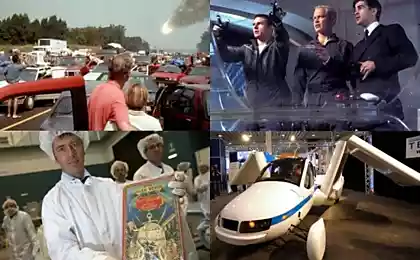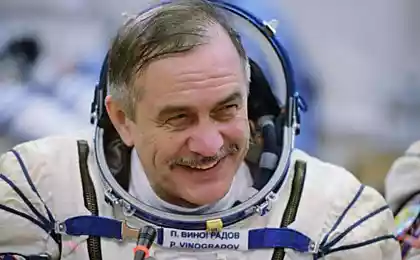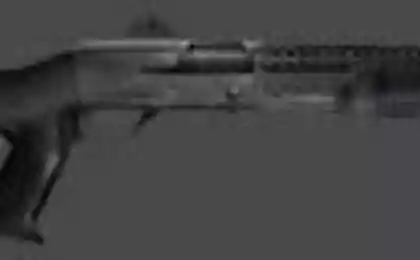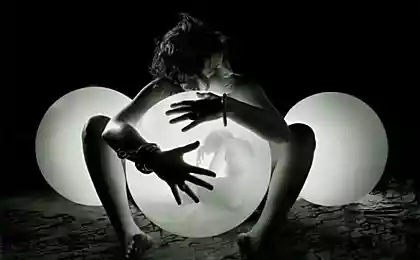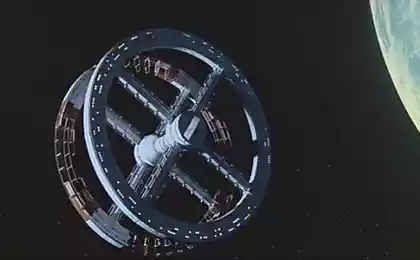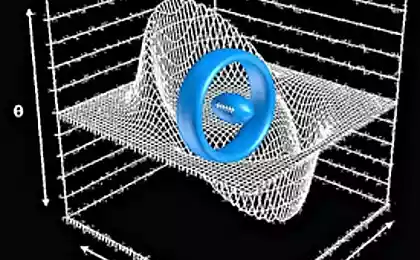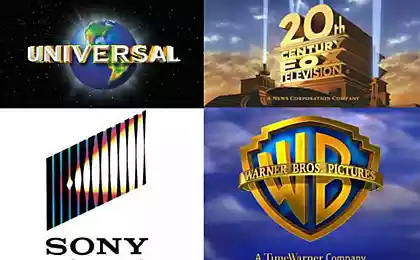844
As should have space settlements to look from the 70s
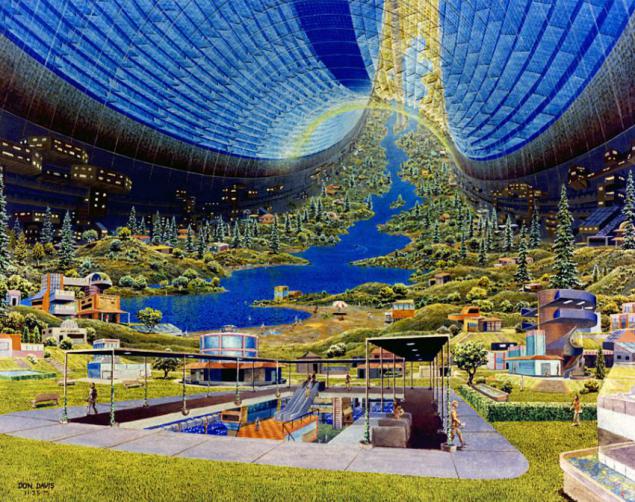
1. Stanford Torus
This building was to become home to 10,000 people. Structurally, it is a torus with a diameter of about 1, 8 km, which would rotate around its axis at a speed of one revolution per minute, creating artificial gravity to 0 9 - 1 g in the interior of the outer ring.
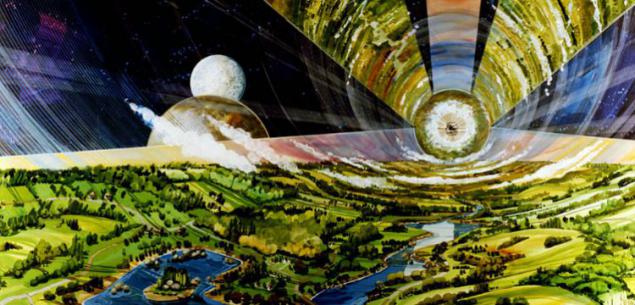
2. Part of the ring assigned to farming, part - residential premises.

3. Sunlight had come in through a system of mirrors.
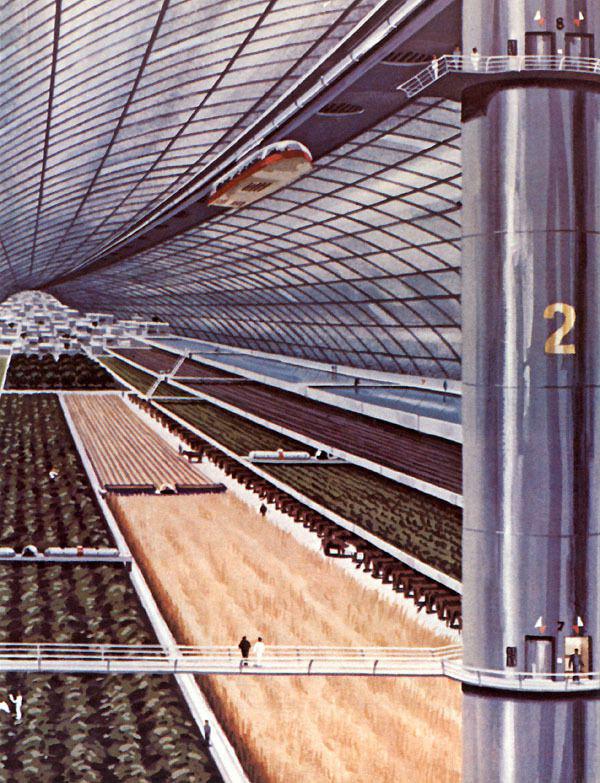
4. The ring is connected to the hub via the "spokes" is a corridor for the movement of people and goods from the axis and vice versa.
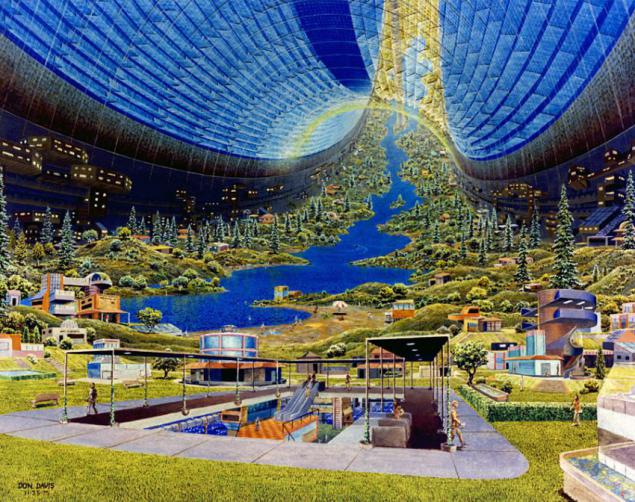
5. As the hub on a rotating axis of the station experienced the lowest centrifugal force it is best suited for the equipment docking station to receive spacecraft.

6. The inner space of the torus was large enough to create an artificial ecosystem inside would be like a long, narrow glacial valley whose ends zgibalis up to form a circle.
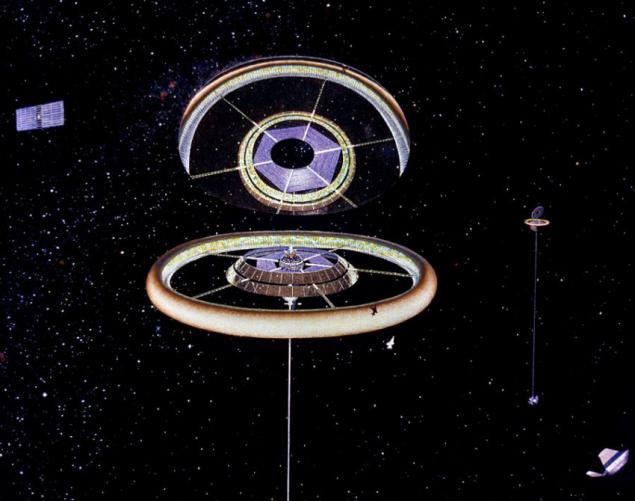
7. The population density of the Stanford torus had to meet a densely populated suburb.
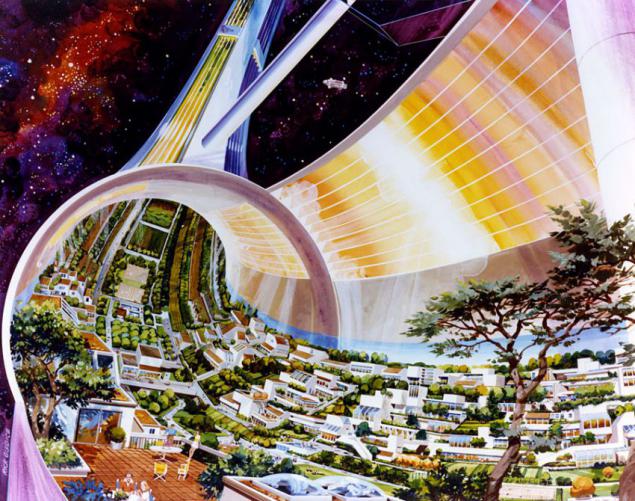
8. Scope Bernal
The original version of this building was designed in 1929 by John Desmond Bernal and was an air-filled sphere with a diameter of 16 kilometers, can accommodate 20 - 30 thousand people.

9. Option Stanford University was designed for 10 thousand people.

10. The diameter of this sphere should reach 500 meters, and the speed of rotation - 1, 9 rpm. It would create a sphere at the equator artificial gravity similar to Earth's.

11. Because of these design features, the inner landscape was like a big valley, extending the scope of the equator.

12. Sunlight penetrates into the interior of the sphere through a network of external mirrors and directed through a large window at the pole of the sphere.
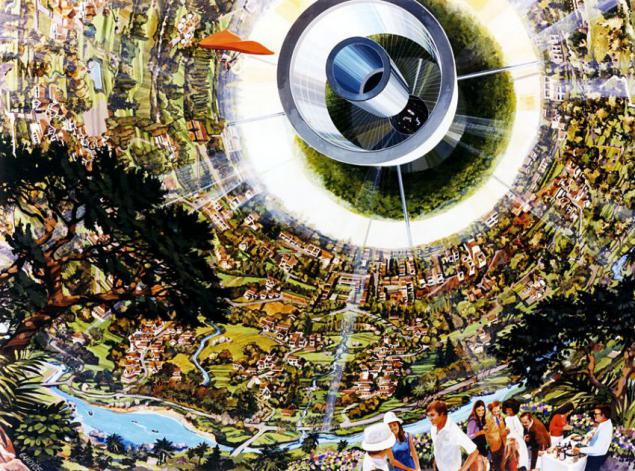
13. The shape of a sphere has been recognized for the optimal containment internal pressure and the reflection of solar radiation. It was supposed to create a special department for farming.
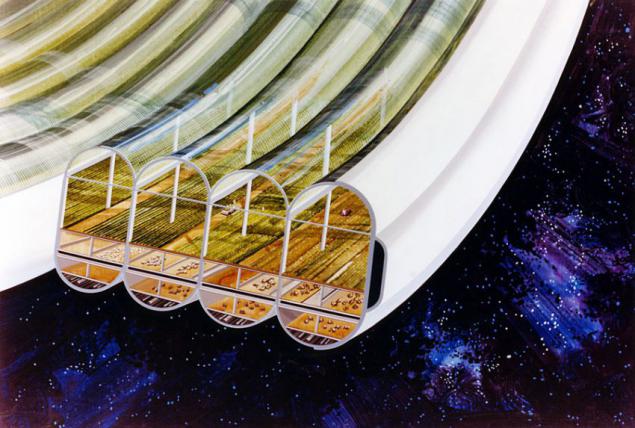
14. There was also a large project Bernal sphere with a diameter of 1,800 meters and a length of the equatorial circumference of 6.5 kilometers. It was assumed that such a structure will be home to 140,000 people.

15. Cylinder O'Neill
The greatest of all is considering a draft settlement, assumes a constant population of 1 million has been proposed scientist Gerard O'Neill. Structurally, O'Neill embodiment consisted of two counter-rotating speed of 40 revolutions per hour cylinder 32 and a length of 8 kilometers in diameter, connected to each other through the rod end bearings.
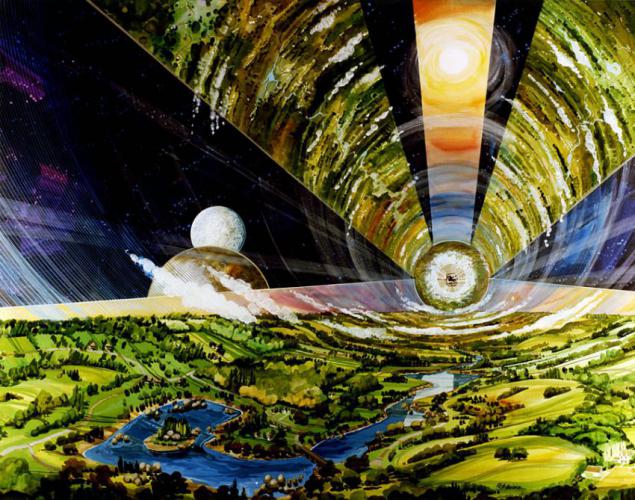
16. Each cylinder has six equal portions of bands along the length of the cylinder - three windows and three "sushi" that housed to the structure. On the reverse side windows were large mirrors, whose purpose was to reflect sunlight into the cylinder through the windows. Due to the gradual movement of mirrors intended to recreate the effect of a change for Earth Day angle of incidence of sunlight. The night was simulated discovery mirrors that would allow windows to display views of open space and radiate excess heat into space.

17. The outer ring of farming could change the speed of rotation in order to increase productivity. The industrial unit would be situated in the middle - it was thought that microgravity will contribute to the production of materials.

18. Atmosphere populations would consist of 40% oxygen and 60% nitrogen at a pressure of halfway around.

19. Thanks to the huge interior volume, it was assumed that there would be inside the cylinder own weather system.
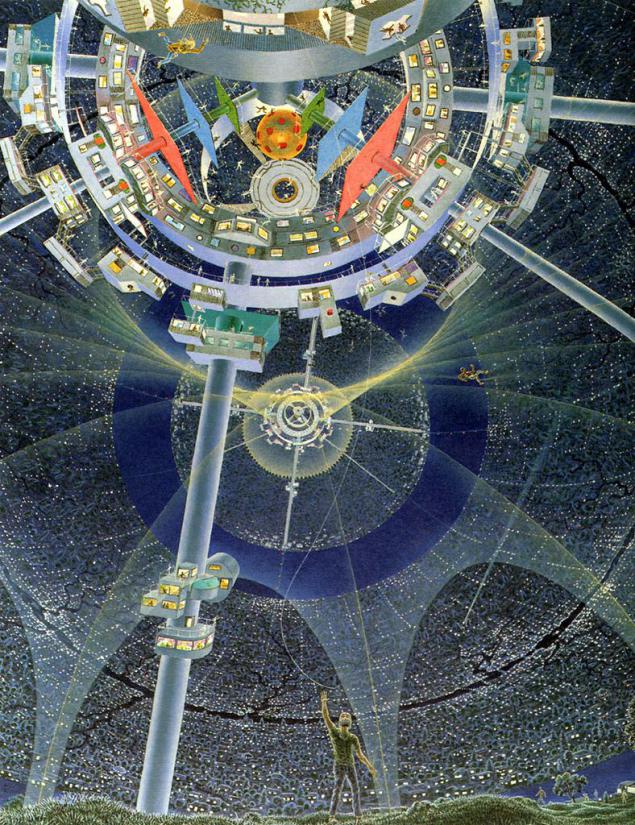
20. To get rid of the astronomical costs of transporting materials to build the station from Earth, O'Neill cylinders were made using materials mined on the moon, and delivered by means of an electromagnetic catapult.

21. understand, with current technologies, all these projects seem utopian. To be more specific, I will give an example. Estimated weight Bernal sphere is 4 million tons. Now take one of the greatest engineering works of all time - the International Space Station, which is created in orbit here for over 15 years. ISS is home to six astronauts, weighs a little over 400 tons, and operating costs for its creation are estimated at 150 billion dollars. If you try to imagine how much time and money it would take to create a sphere Beranala with current technology ... not sure on a conventional calculator enough zeros to this.

Nevertheless, it is possible that something of these developments still find its use - not now, not in 20 years, but eventually, if we of course had nibul reach a level of development and need be. And who knows, maybe in some distant future, these facilities will still be circling in space to classical music?
--img23--



